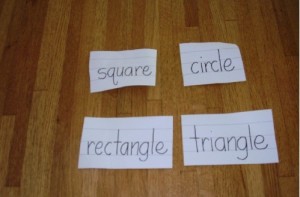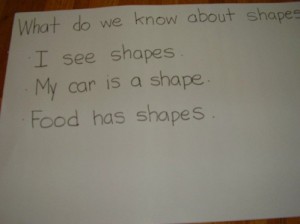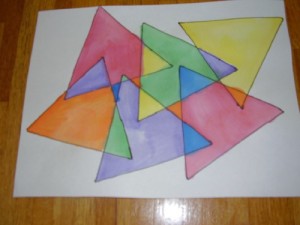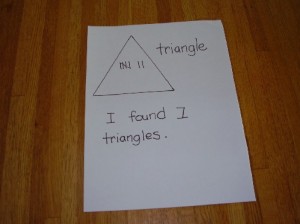For the month of September 2011, we bring you two great lessons based on the Common Core State Standards! The first is for geometry and the second works on helping children learn to write their name.
- Common Core State Standard for Geometry: Identify and describe shapes (squares, circles, triangles, rectangles, hexagons, cubes, cones, cylinders, and spheres), describe their positions as above, below, beside, in front of, behind, and next to, and name shapes regardless of their orientations or overall size.
- Common Core State Standard for Language: Know conventions of standard English capitalization, punctuation, and spelling when writing.
[learn_more caption=”Shapes Are Everywhere“]
 flat attribute blocks-squares. circles, triangles, squares and rectangles
flat attribute blocks-squares. circles, triangles, squares and rectangles- word cards- on sentence strips write ‘triangle’, ‘circle’, ‘square’ and ‘rectangle’
- clipboards
- white paper
- 9 X12 drawing paper
- pencils
- fine tip black permanent markers
- watercolor set
- paintbrushes
- water containers
Transitional Kindergarten Lesson

Kindergarten Lesson
[/learn_more]
[learn_more caption=”Name Writing“]
10. Beans – Write the kids names on Astro Brite sentence strip paper, change the bean every week will you can’t find anything else to glue! Rice, garbanzos, lentils etc. The smaller the bean or grain, the better to build those small muscles in the fingers. In March be sure to get out the teeny tiny quinoa and make tiny names with tweezers – the leprechauns will love it!![/learn_more]



Leave a Reply